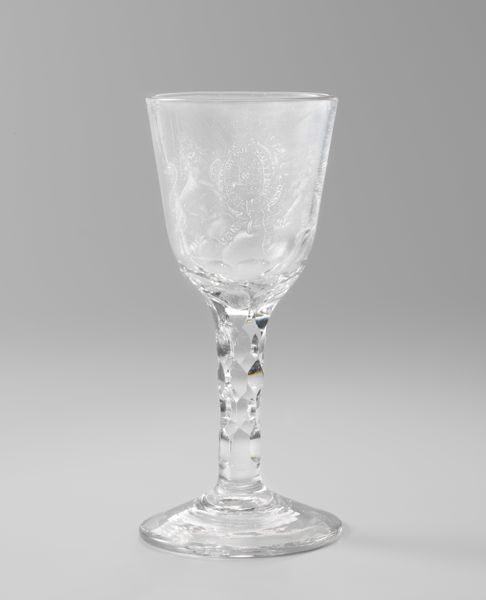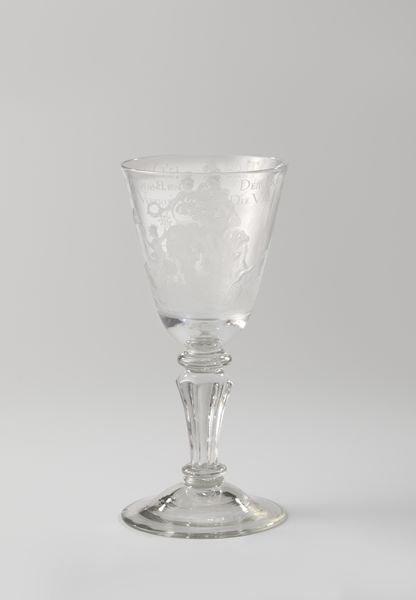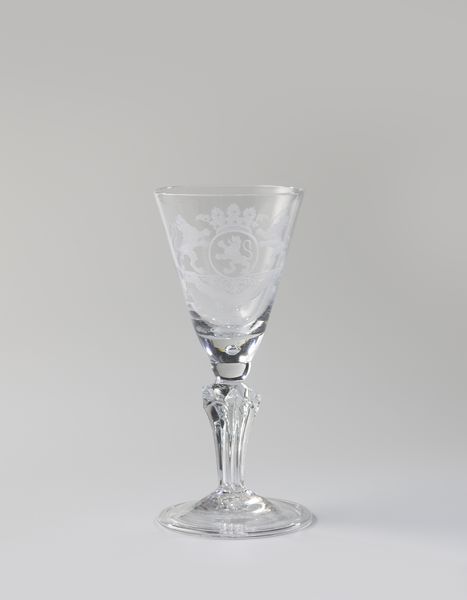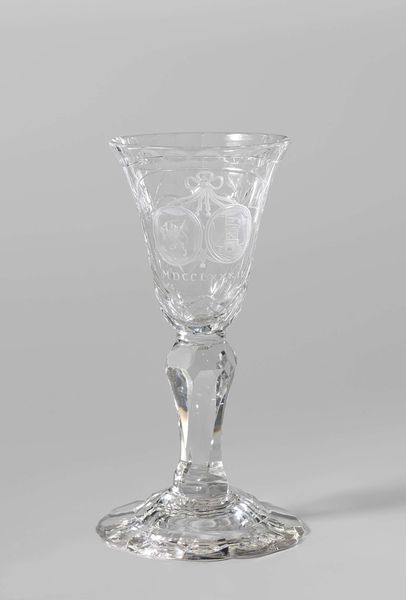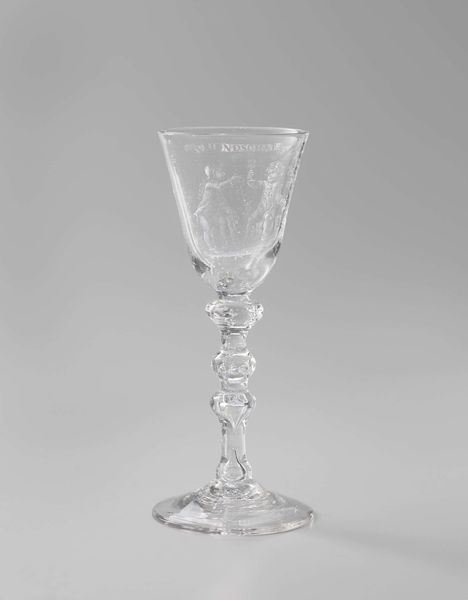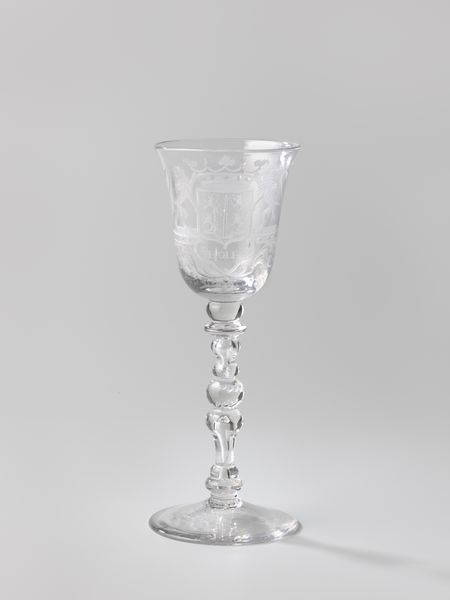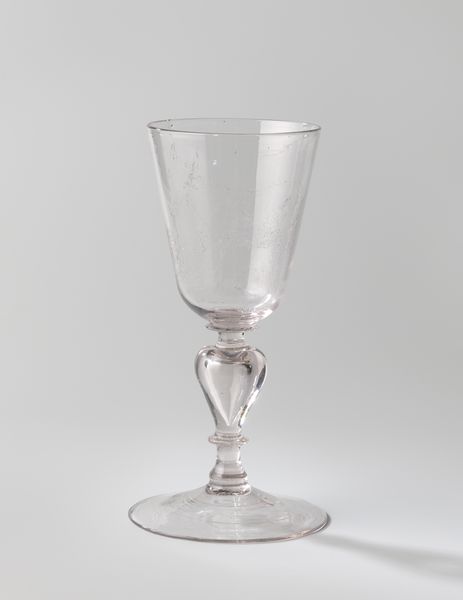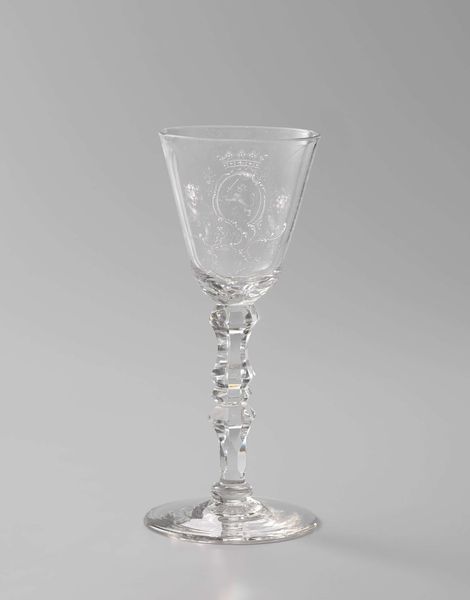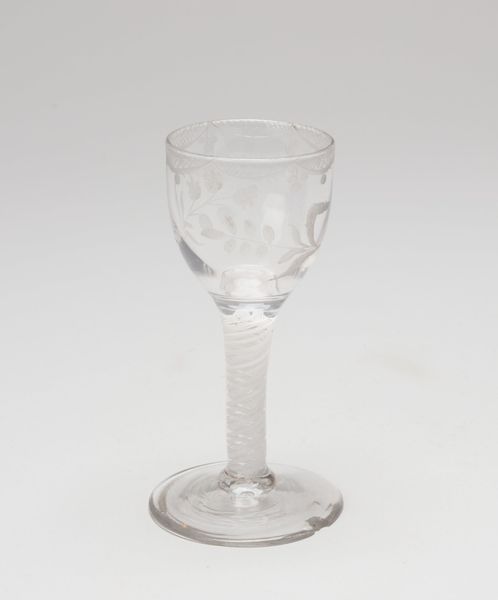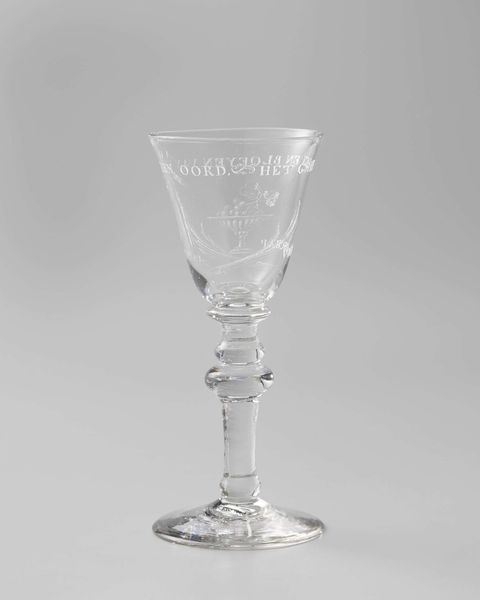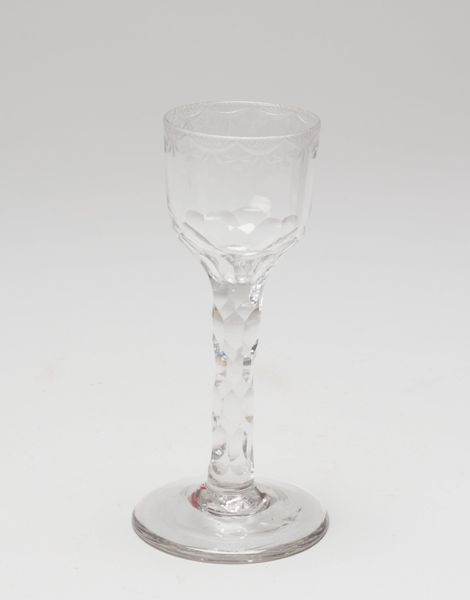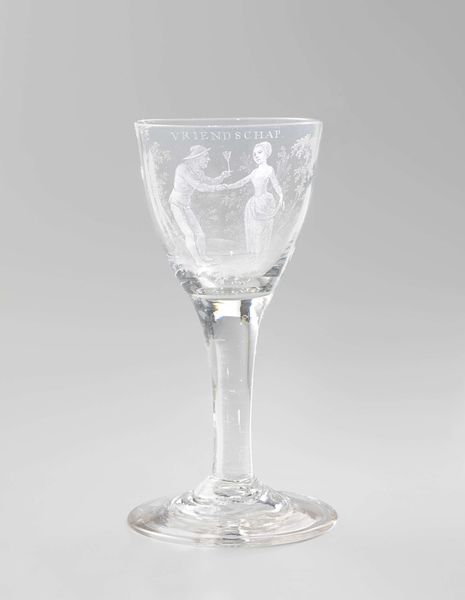
Wine glass with a depiction of the alliance between the Batavian Republic and the French Republic c. 1795
0:00
0:00
glass, engraving
#
neoclacissism
#
figuration
#
glass
#
ceramic
#
history-painting
#
engraving
Dimensions: height 15.1 cm, diameter 7.4 cm, diameter 8.2 cm
Copyright: Rijks Museum: Open Domain
Editor: This is a wine glass, circa 1795, with an engraving that celebrates the alliance between the Batavian Republic and the French Republic. The delicacy of the glass juxtaposed with the bold political statement seems almost ironic. What's your take on this, seeing it through a socio-political lens? Curator: The seemingly innocuous nature of a wine glass provides a compelling space to examine how political narratives are subtly woven into everyday life. Consider the period: the French Revolution just ended. This glass commemorates an alliance, yet alliances are rarely equitable. Editor: So, you’re saying that it represents a potentially fraught relationship, dressed up as a celebration? Curator: Exactly! Consider who this glass was likely made *for.* It would be the elite classes drinking from these glasses while the revolution promises of equality become more like a changing of guard at the top. Note how this work is filed as "anonymous." What does anonymity afford the creator in this politically precarious moment? Editor: That's fascinating! It’s a silent endorsement, yet shields the maker from potential repercussions. It speaks volumes about power dynamics during that period. Is this sort of quiet political messaging common in Neoclassical art? Curator: While overt revolutionary messaging was present, particularly in French art, everyday objects such as this offered a more covert means of expressing, or perhaps signaling allegiance and celebrating an alliance and, perhaps, a new social order. Do you see the female figures and the symbols present on the glass? What are they intended to signal? Editor: I see what could be allegorical figures extending a branch, potentially signaling friendship? Curator: Exactly! The beauty of art lies in its capacity to speak to different people in many eras. These symbols may not mean to all what they mean to some, which makes it an appealing object, from an aesthetic viewpoint, but the history and implications make it that much more profound. Editor: I agree. I see the work in a new light!
Comments
No comments
Be the first to comment and join the conversation on the ultimate creative platform.
